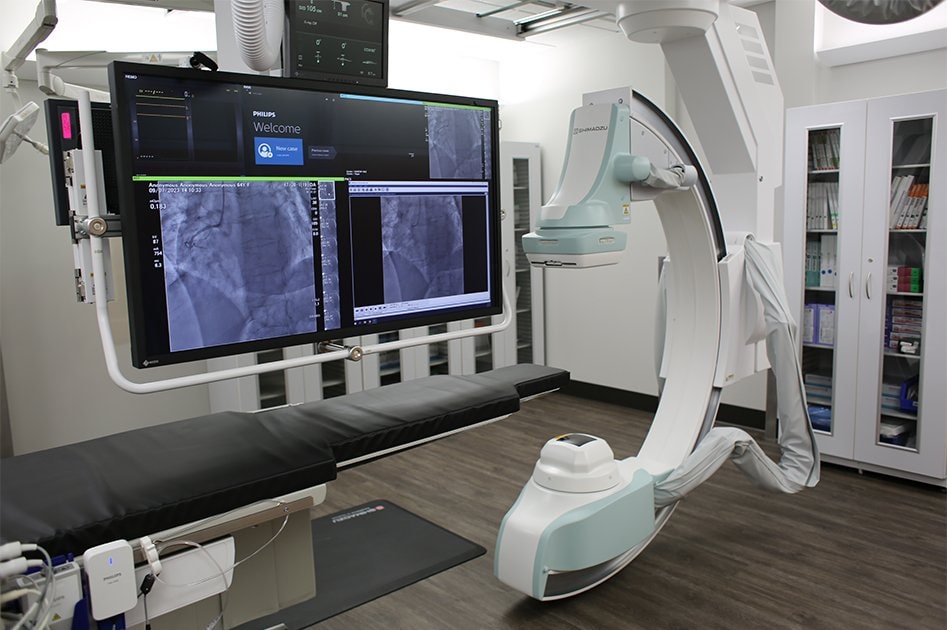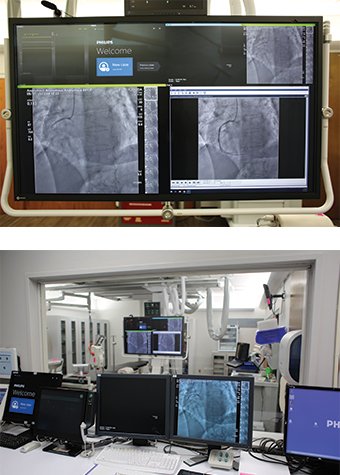
Cardiac Catheterization
 Cardiac catheterizations are procedures used to diagnose and treat certain cardiovascular conditions. Catheterizations are performed to check for heart disease (such as coronary artery disease, heart valve disease, or disease of the aorta), to monitor how the heart muscle is working, and to decide whether further treatment (such as an interventional procedure or bypass surgery) is needed. During cardiac catheterization, a long thin tube (catheter) is inserted into an artery or vein in your groin, neck or arm and threaded through your blood vessels to your heart.
Cardiac catheterizations are procedures used to diagnose and treat certain cardiovascular conditions. Catheterizations are performed to check for heart disease (such as coronary artery disease, heart valve disease, or disease of the aorta), to monitor how the heart muscle is working, and to decide whether further treatment (such as an interventional procedure or bypass surgery) is needed. During cardiac catheterization, a long thin tube (catheter) is inserted into an artery or vein in your groin, neck or arm and threaded through your blood vessels to your heart.
The majority of Holzer cardiac caths are performed radially, which is through the wrist. This type of catheterization is when the interventional cardiologist uses the radial artery in the wrist as the entry point for the catheter. The thin catheter then works through the body’s network of arteries in the arm and into the chest, reaching the heart. Catheterizations performed this way are reported to have improved safety, enhanced comfort, and shorter recovery times.
Advanced Technology
Holzer Cardiovascular Services uses the Trinias C8 unity edition (ceiling-mounted cutting-edge angiography system) from Shimadzu Medical Systems USA. This technology provides the ability to solve the everyday imaging problems in the cardiac cath lab. Shimadzu’s high speed SCORE PRO Advance image processing technology maintains image quality while reducing dose. SMART Access gives the user the ability to move from fingertip to fingertip to better manage radial access. The large tableside SmartDisplay brings all the images to the bedside on one monitor with a customized display.